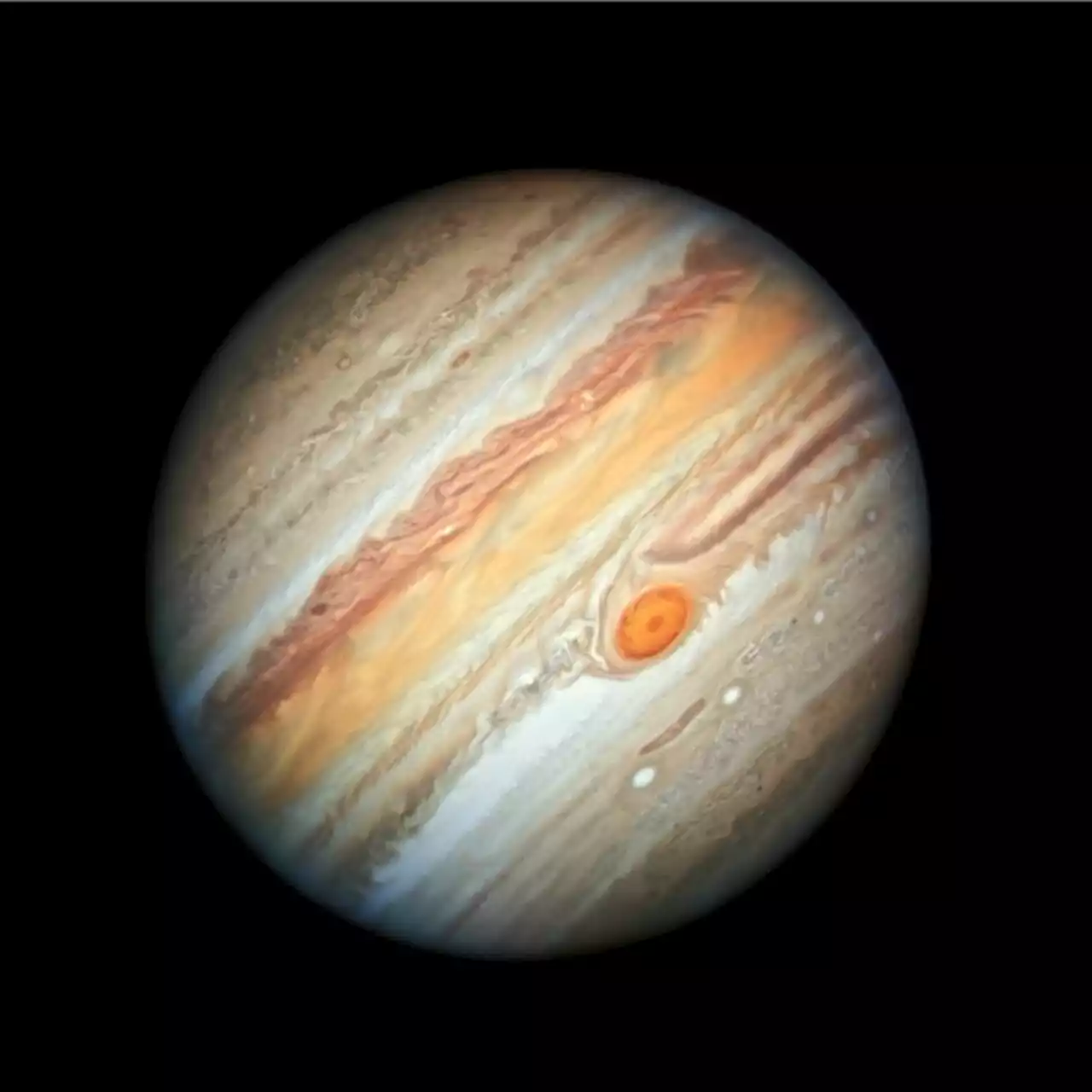Stargazers: Jupiter will make its closest approach to Earth in 59 years! Weather-permitting, expect excellent views on Sept. 26. A good pair of binoculars should be enough to catch some details; you’ll need a large telescope to see the Great Red Spot.
Stargazers can expect excellent views of Jupiter the entire night of Monday, Sept. 26 when the giant planet reaches opposition. From the viewpoint of Earth’s surface, opposition happens when an astronomical object rises in the east as the Sun sets in the west, placing the object and the Sun on opposite sides of Earth.
This photo of Jupiter, taken from the Hubble Space Telescope on June 27, 2019, features the Great Red Spot, a storm the size of Earth that has been raging for hundreds of years. Credits: NASA, ESA, A. Simon , and M.H. Wong Kobelski recommends a larger telescope to see Jupiter’s Great Red Spot and bands in more detail; a 4 inch-or-larger telescope and some filters in the green to blue range would enhance the visibility of these features.“The views should be great for a few days before and after Sept. 26,” Kobelski said. “So, take advantage of good weather on either side of this date to take in the sight. Outside of the Moon, it should be one of the brightest objects in the night sky.
, Io, Europa, Ganymede, and Callisto, are called the Galilean satellites. They are named after the man who first observed them in 1610, Galileo Galilei. In binoculars or a telescope, the Galilean satellites should appear as bright dots on either side of Jupiter during opposition.
